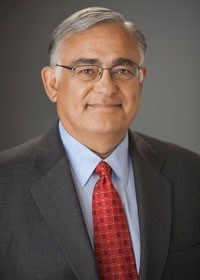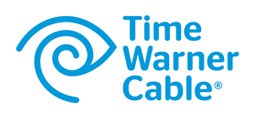 With promotions from Time Warner Cable no longer being what they used to be, customers are struggling to get as much savings as possible from discount pricing and a $200 gift card offer available to those switching from a competing provider.
With promotions from Time Warner Cable no longer being what they used to be, customers are struggling to get as much savings as possible from discount pricing and a $200 gift card offer available to those switching from a competing provider.
But expecting a $200 debit card and actually getting it are two different things, as some customers are learning.
Stop the Cap! regularly gets reader complaints from customers who signed up for Time Warner Cable promotions but are rejected for the rebate, primarily because they did not follow all the rules or waited too long.
Typically, Time Warner’s complicated rebates are only available to customers switching from another provider. New customers who don’t have active, equivalent service with another company do not qualify. If you don’t have cable television and watch shows online from Netflix or only have a cell phone for telephone service, you won’t qualify.
Other important rules:
- Customers have to stay with Time Warner for 90 days after installation with no past due balances to qualify to apply for the rebate;
- You must register your rebate on a special website within 30 days of installation;
- You must also upload a copy of the bill from your previous service provider issued within the last 90 days showing the service(s) you are cancelling. Customer’s name and/or address on previous provider’s bill must match name and/or address on Time Warner Cable installation order;
- You will need a “redemption code” found on a postcard and/or email sent to you after installation that includes your rebate registration instructions to apply for the rebate.
 With requirements like that, customers can easily be tripped up along the way and get rejected for the rebate.
With requirements like that, customers can easily be tripped up along the way and get rejected for the rebate.
We recommend customers create a folder to keep Time Warner Cable documentation in one easy-to-remember place. If you can’t find a rebate redemption code, don’t search the house. Call Time Warner Cable at 1-888-892-2253 and request one over the phone.
We also suggest you use a calendar to make note of deadlines and track your rebate so you don’t forget. Some people only discover they were rejected when they called to ask about a missing rebate card.
The biggest obstacle is usually finding and uploading a final bill showing services disconnected with the other provider. By the time some providers send your last bill, the rebate may have slipped your mind or the submission deadline has passed.
 If your rebate request was denied and you made a good faith effort to follow the rules, don’t give up and say goodbye to $200.
If your rebate request was denied and you made a good faith effort to follow the rules, don’t give up and say goodbye to $200.
- Start by calling Time Warner Cable and complaining.
- If your documentation was sent and the company claims it was not received, ask them to accept a copy.
- If you are still rejected or if the company points you to the rebate processor who points you back to the company, file a complaint with the Better Business Bureau against the Time Warner Cable division nearest you. In reviewing several cases about rebate eligibility, it is clear Time Warner usually settles these complaints by applying a credit for the rebate card amount to your Time Warner Cable bill.
If and when your rebate card does arrive, it comes with a booklet of terms and conditions as well. Our best advice is to spend the money quickly, because after six months, the issuing bank starts deducting service fees. If you lose the card, it will cost just under $6 to get a new one.
Some suggested uses include buying gift cards with fewer restrictions (Amazon.com is a common choice) if you are worried you won’t use the card fast enough.
One of the best local places to quickly use rebate cards are in supermarkets. Keep track of your balance and when just a few dollars are left, ask the cashier to process it for the exact amount of the remaining funds on the card. The cashier can then accept another credit card, cash or a check for any remaining balance due. Do not use your reward card at a gas station, rental car company, hotel, restaurant or for bill payments. These establishments often place a temporary hold on card funds in excess of the transaction amount or first process a test authorization on the card for a few dollars to make sure the card is valid and has adequate funds available. It can take several days before holds on those funds are released.


 Subscribe
Subscribe


 Cable companies, including Time Warner Cable, are offering a mix of threats and financial incentives to keep popular cable programming away from online video competitors.
Cable companies, including Time Warner Cable, are offering a mix of threats and financial incentives to keep popular cable programming away from online video competitors.
 One of America’s lowest-rated cable companies and an industry legend labeled by consumer advocates as the “Darth Vader of cable” may be joining forces to buy Time Warner Cable, according to Bloomberg News.
One of America’s lowest-rated cable companies and an industry legend labeled by consumer advocates as the “Darth Vader of cable” may be joining forces to buy Time Warner Cable, according to Bloomberg News.
 But the most obvious foreshadowing of a big deal with Time Warner would most likely come if Charter first successfully acquires always-rumored-for-sale Cablevision, where the controlling Dolan family is rumored to be holding out for an exceptionally attractive buyout package other cable companies aren’t willing to offer. Time Warner itself has been rumored as a buyer, but current management has repeatedly stressed it will not pay a premium price for acquisition targets.
But the most obvious foreshadowing of a big deal with Time Warner would most likely come if Charter first successfully acquires always-rumored-for-sale Cablevision, where the controlling Dolan family is rumored to be holding out for an exceptionally attractive buyout package other cable companies aren’t willing to offer. Time Warner itself has been rumored as a buyer, but current management has repeatedly stressed it will not pay a premium price for acquisition targets.